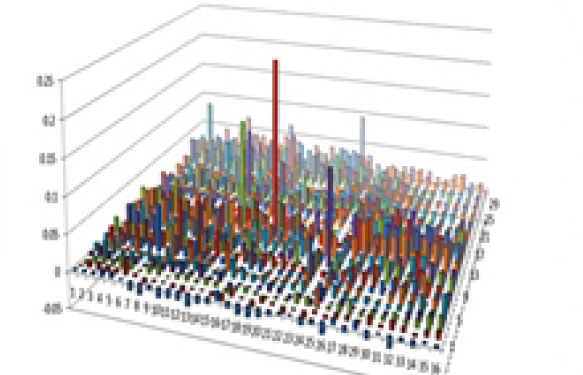The Murphy Roths Large-MRL engineered mouse strain spontaneously regenerates ears and even heart tissue. Such a regenerative process is known for amphibians; mammals generally forming scar tissue during the process of wound repair. The groups of Ellen Heber-Katz (The Wistar Institute, Philadelphia, PA) and Phillip B. Messersmith (Northwestern University, Evanston, IL) discovered these exceptional capabilities a few years ago. By using this unique model, the scientists have recently shown that Hypoxia-Inducible Factor-1 alpha (HIF-1alpha) is involved in mammalian tissue regeneration (Zhang Y. et al. “Drug-induced regeneration in adult mice”(2015) Sci. Transl. Med. DOI: 10.1126/scitranslmed.3010228).
By using silencing strategies, the authors demonstrated that blocking the HIF-1alpha expression can lead to loss of the regenerative capabilities in siRNA-treated MRL mice. Under normoxic conditions, HIF-1alpha is degraded via a process mediated by Prolyl Hydroxylases (PHD). 1,4-DihydroPhenonthrolin-4-one-3-Carboxylic Acid (1,4-DPCA) is known to be a PHD inhibitor.  It has been shown previously that connective tissue in growth in porous poly(lactic-co-glycolic acid) discs implanted peritoneal cavities can be suppressed by 1,4-DPCA (Love R.J. et al. – J. Biomed. Mater. Res. A. (2013) 101 (12): 3599-606).
It has been shown previously that connective tissue in growth in porous poly(lactic-co-glycolic acid) discs implanted peritoneal cavities can be suppressed by 1,4-DPCA (Love R.J. et al. – J. Biomed. Mater. Res. A. (2013) 101 (12): 3599-606).
Heber-Katz and her team then injected a gel containing 1,4-DPCA into the necks of normal mice whose ears had been punctured before. Indeed the wounds in the ears rapidly closed, meaning that the inhibition of PHD had led to an increase of HIF-1alpha which subsequently triggered the regeneration process.
As it has already been shown that the regenerative effect can be reached by a compound which was not injected directly at the site of the wound, the authors conclude that might be a chance that this treatment could also be applied to wounds in internal organs.
To further stimulate research in the tissue regeneration/wound healing field, Focus Biomolecules has made 1, 4-DPCA available to the research community:
- Description: Potent inhibitor of prolyl 4-hydroxylase (IC50=2-4 µM).
- Mechanisms of action: Inhibition of collagen deposition via inhibition of collagen proline hydroxylation. Subcutaneous injection of a 1,4-DPCA containing hydrogel into Swiss Webster mice that do not show a regenerative phenotype increased expression of HIF1-alpha over 5 days. Multiple injections led to regenerative wound healing after ear hole punch injury.
- Size: 10 & 50 mg – custom production available upon requests
- Molecular Weight: 240.22
- Molecular Formula: C13H8N2O3
- CAS Number: 331830-20-7
- Purity: 98% by HPLC – NMR (Confirms)
- Solubility: DMSO (up to 15 mg/ml with warming)
Looking for ultra-pure bioactive small molecules? Leave us a message below!



